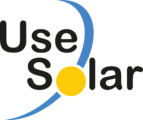FREQUENTLY ASKED QUESTIONSFAQ
Space is a key consideration. The average system size is around 3.5kWp and this will typically take up around 20m2 roof area.
An unshaded, south facing roof is ideal for maximum electrical output. East or West facing roofs could still be considered, but North facing roofs are not recommended. A system facing East or West will yield around 15-20% less energy than one facing directly South.
Any nearby buildings, trees or chimneys could shade your roof and have a negative impact on the performance of your system.
Finding an unshaded spot is best, however sometimes shading is unavoidable. Some solar PV systems can minimize the impact of shading using ‘optimizers’. If you don’t have shading, the use of optimizers is not necessary or beneficial, other than the increased monitoring opportunities they offer – they won’t generate more energy.
Solar PV panels are considered ‘permitted developments’ and often don’t require planning permission. If you live in a listed building, conservation area or national park, additional restrictions may apply.
Solar PV systems don’t require much maintenance – you’ll just need to keep the panels relatively clean and make sure trees don’t begin to overshadow them.
Once fitted, your handover pack will include details for everything you will need and any maintenance checks that you should carry out from time to time to ensure everything is working properly.
They don’t need direct sunlight to work – they can still generate some electricity on a cloudy day. However, the stronger the sunshine, the more electricity generated.
